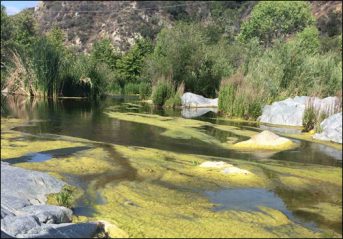Models being built to establish nutrient loading targets for Santa Margarita River

SCCWRP and its partners have begun assembling a suite of models to support development of scientifically defensible nutrient loading targets for reducing eutrophication in the lower Santa Margarita River watershed.
The work, launched in January, is part of a three-year project that will enable water-quality managers to optimally protect biological integrity and human use in the lower mainstem of the Santa Margarita River.
Researchers are using recently collected field data to assemble a suite of mechanistic process models and empirical, statistical models.
The Santa Margarita River watershed, which spans Riverside and northern San Diego Counties, has been grappling with algal proliferation and low dissolved oxygen as a result of excess nutrient inputs.
The tools and concepts being developed and applied to Santa Margarita are expected to influence how nutrient management is approached in eutrophic wadeable stream systems across California. In particular, the project is serving as a key California case study for test-driving elements of a proposed State Water Board wadeable stream biointegrity and biostimulatory policy, which could be adopted as early as 2019 to govern the health of wadeable streams statewide.
More news related to: Eutrophication, Harmful Algal Blooms